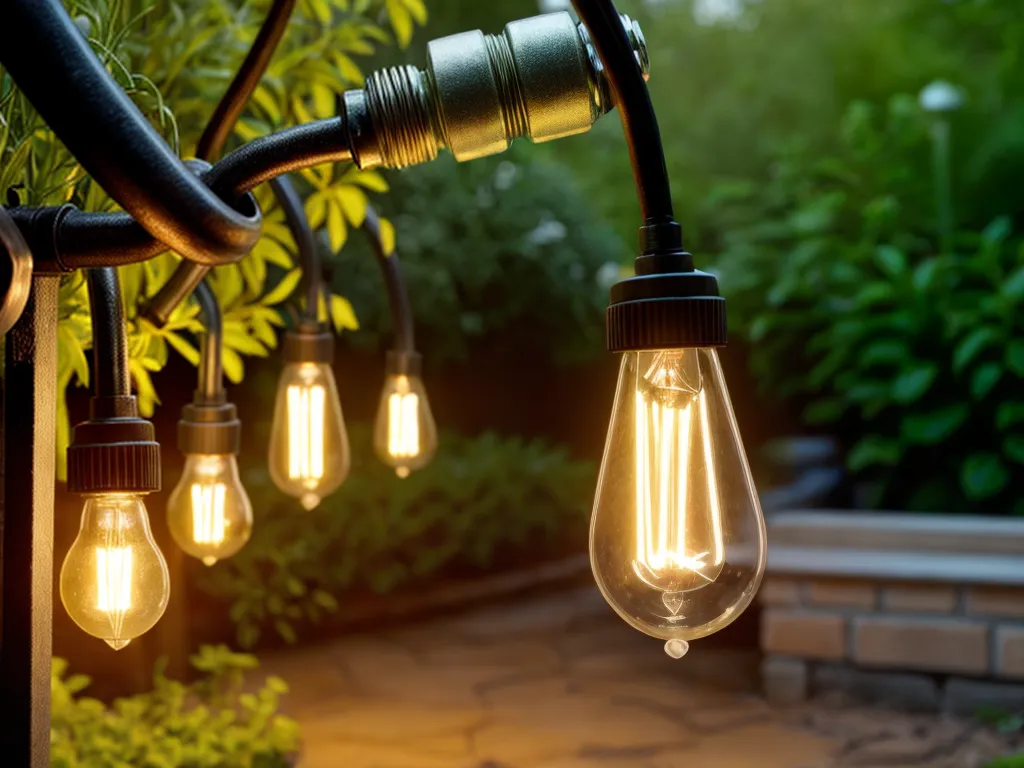
Having issues with your garden lighting not turning on or flickering? Faulty wiring is often the culprit behind malfunctioning outdoor lighting systems. With some basic tools and troubleshooting techniques, you can likely diagnose and fix faulty wiring problems on your own.
Inspecting Your Garden Light Wiring
The first step is to closely inspect your garden light wires to try to identify the problem. Here are some things to look for:
-
Frayed or damaged wires - Damaged wire insulation can expose the inner copper wiring and cause shorts. Look for any cracks, fraying, or other damage along the length of the wires.
-
Corroded connections - Check all the wire connection points, such as at light fixtures, splice connections, and the transformer. Corrosion can prevent good contact and cause wiring issues.
-
Cracked wire casing - Plastic casings around low-voltage wiring can become brittle and cracked over time after exposure to sunlight and weather. Cracks allow moisture to penetrate the wiring.
-
Cut or stapled wires - Inspect wires for any inadvertent cuts or spots where they may have been stapled or nicked, compromising the insulation.
Pay particular attention to any areas where multiple wires are joined, such as at splice connections. Issues in these spots are common sources of problems.
Tools Needed
-
Voltage tester - Essential for safely checking voltage levels and finding live wires or short circuits.
-
Wire stripper - For accessing and repairing wires at connection points.
-
Electrical tape - To insulate and weatherproof repaired wire connections.
-
Hand shovel or trowel - For burying and accessing underground wire runs as needed.
Diagnosing and Locating Faults
If inspection reveals no obvious issues, the next step is testing the garden light circuit to diagnose problems:
Check Voltage at the Transformer
Use a voltage tester to check the voltage at the low voltage landscape lighting transformer. No voltage here indicates a power supply issue. Check that the transformer is plugged in, turned on, and working properly. Many transformers have a reset button that may need to be pressed to restore output.
Check Voltage Along the Wire Run
With the transformer on, move down the lighting circuit, testing voltage along the wire path. The tester should light up when near a live wire. A section with no voltage indicates a cut wire or bad connection. Zero in on where the voltage stops to find the fault.
Test for Short Circuits
Shorts from damaged insulation can stop lights from turning on. Use the voltage tester to find hot spots indicating a short. Or test each light by disconnecting it and seeing if power is restored to the other lights. A short after a fitting indicates faulty wiring in that section.
Repairing Common Garden Light Wire Problems
Once the wiring problem is identified, repairs can be made. Here are some common issues and fixes:
Damaged Wires
- Cut out the damaged section of wire if possible, and splice in a new piece of wire using wire nuts.
- Alternatively, wrap the damaged area thoroughly with electrical tape for a temporary fix. Be sure no copper is exposed.
Corroded Connections
- Disconnect the fitting or splice connector.
- Use wire strippers to cut back and expose fresh, non-corroded wire.
- Reconnect and tightly twist wires together with wire nuts.
- Seal connections with electrical tape to prevent moisture and corrosion.
Cracked Casing
- Thoroughly wrap all cracked areas with electrical tape to seal the casing.
- Consider replacing the damaged wiring if cracks are extensive.
Cut or Stapled Wires
- Cut back to good wiring and splice in a new section, as with damaged wires above.
- Avoid stapling new wiring—use plastic wire clips instead to prevent future damage.
With some basic DIY electrical skills, you can troubleshoot and fix many common garden light wiring faults. Test repairs before burying wires. Call an electrician for major wiring issues or if problems persist. Proper repairs will get your garden lighting running like new again.